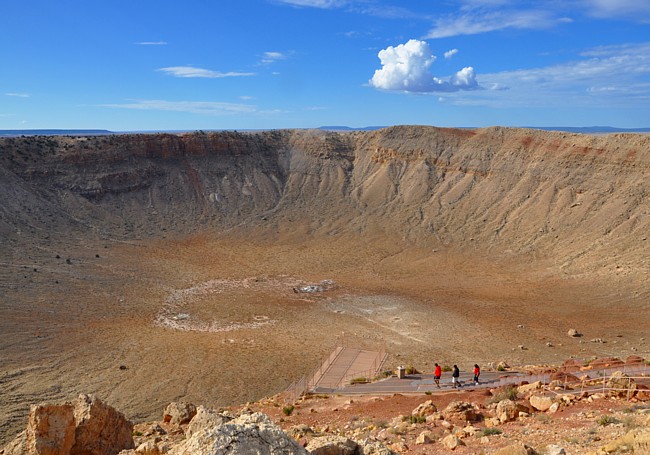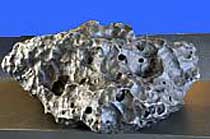|
Scenic USA - Arizona Meteor Crater |

| Photos by Kenneth C. Brown |
Not far from Interstate 40 and Winslow, Arizona, there's a gigantic hole in the earth. Measurements indicate the grand pothole is nearly a mile across, 570 feet deep and missing more than 300 million tons of Arizona desert sand and rock. The first known person to call attention to the crater in 1892 is credited to rancher Julius Henderson. Early guesses pointed to its origin as volcanic activity. By the 1920s other theories arose, predicting the fact that the depression was a meteoritic crater. Evidence gathered at the site included millions of tons of pulverized silica, meteoritic iron scattered around the rim and the lack of any volcanic rock in the area. During this scientific investigation, a strong debate also raged among the scientific community about similar craters on the moon. After a half dozen moon missions, there are no doubts about the moon's impact craters.
Meteor Crater (Barringer Crater), is thought to be the best preserved meteor crater in the world.  Arizona's arid climate has had little effect on the 50,000 year old gaping hole. Rising up around the rim, a jumble of boulders and ejecta are stacked to a height of 150 feet. Visitors are able to view the crater from an indoor viewing area, as well as climbing down into the crater itself. The Meteor Crater Visitor Center features the most extensive interactive meteor impact science display in the world. Computer simulations, a meteorite fragment (inset) and Apollo astronaut training exhibits make great additions to the widescreen movie, Collisions and Impacts.
Arizona's arid climate has had little effect on the 50,000 year old gaping hole. Rising up around the rim, a jumble of boulders and ejecta are stacked to a height of 150 feet. Visitors are able to view the crater from an indoor viewing area, as well as climbing down into the crater itself. The Meteor Crater Visitor Center features the most extensive interactive meteor impact science display in the world. Computer simulations, a meteorite fragment (inset) and Apollo astronaut training exhibits make great additions to the widescreen movie, Collisions and Impacts.
Area Map

|
Additional Area Attractions |
|
Copyright © 2023 Benjamin Prepelka
All Rights Reserved
